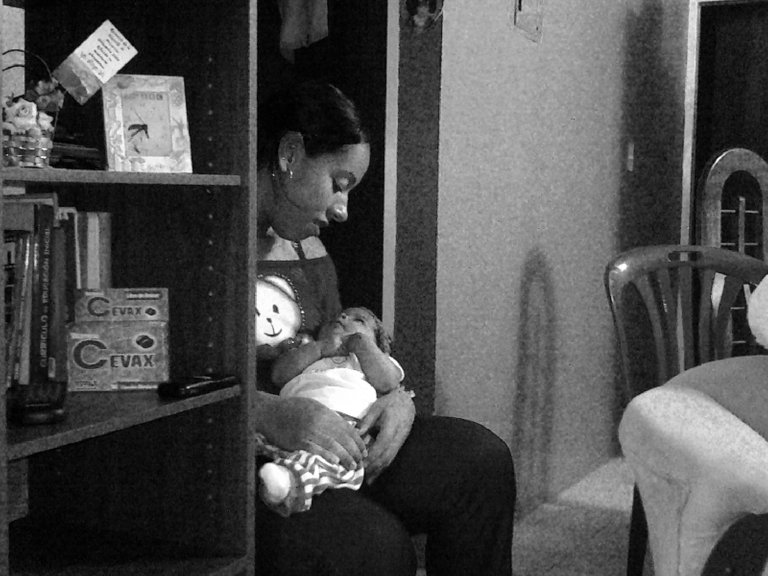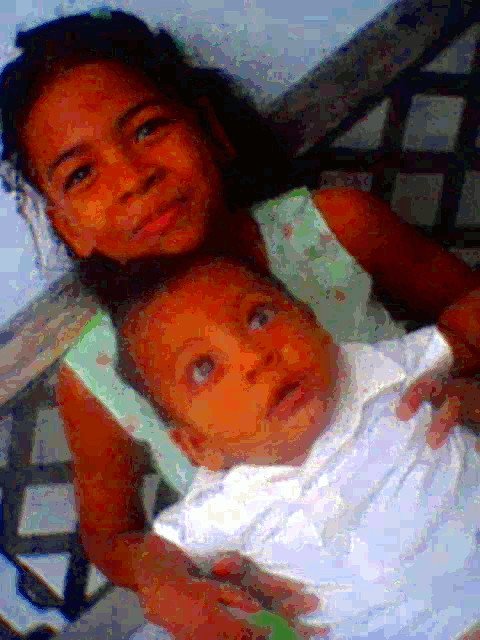Fear as a protective emotion

Greetings Hiverlectores, in this opportunity I share with you some reflections related to fear as a protective adaptive emotion that allows us to maintain an integrity of our organism in dangerous situations.

When we are born we come "equipped" with a series of "tools" that allow us to succeed in life, that allow us to establish interactions with other people and with the environment in such a way that our safety and well-being is guaranteed. In the socialization process these tools are adapted and molded according to the experiences we have in these interactions.
Among these tools are emotions. We are born with a basic emotional "package" that is essential for our survival.
When observing a baby, we can notice that when the mother approaches him and smiles lovingly, the baby reciprocates. His eyes light up and he smiles.
If he is hungry, he cries.
If he hears any loud sound his eyes enlarge and his expression becomes fearful and he cries.

At birth we come with basic emotions: joy, sadness, fear, surprise, disgust, anger.
These emotions function in several ways. In the neonatal stage they allow us to communicate with our significant others (mother, father). At that time we have not yet developed verbal symbolism, so our communication is totally emotional. We let our mother know with our cry, with our smile, with our expressions that something is happening to us. When she sees us, she decodes those expressions and corresponds to us according to the meaning she gave to our emotional expression.
In this socializing process, we are signifying these emotions and we learn that we can generate reactions in others or in ourselves by expressing them. In this way, a link is created between the emotional and the cognitive. This cognitive-emotional totality will produce behavioral and physiological reactions, thoughts and a greater deepening of the emotion.
This process gradually becomes automated and unconscious. Thus, when faced with an emotional situation, the reactions that occur generally arise without conscious control on our part.
In the case of fear, which is an emotion that warns us of dangerous situations, it allows us to take actions that protect us and safeguard our integrity. Fear leads us to take safe actions.
When we face unforeseen, unknown, surprising situations, in which we consider that we may be in danger, our reaction goes in the direction of protecting ourselves from the possible harm we may suffer. We can confront, flee or remain static. The goal is to resolve the dangerous situation in such a way that the damage is null or minimal.
If we are jumping with a parachute and it does not open, and if fear is activated, we immediately use the emergency parachute. If, on the other hand, we react overconfident because we have prior knowledge of how the parachute works, then we will try to solve the situation that prevents the parachute from opening. This can be counterproductive if the distance of the jump is short.
If during our evolutionary development from birth our significant others provided us with support, security and guided us assertively in situations that caused us fear, when in adulthood we face situations with a traumatic content our reactions will go in the right direction.
In development, in childhood, when we see a dog barking and agitated and our mom or dad has a panic reaction we will imitate that behavior and store it in our unconscious as a normal reaction. On the contrary, if when we were startled, our significant others showed us that there is nothing to fear with respect to the dog, they communicated assertively with us, showing us what to do, this will also be a behavior that we will model when we face similar situations.
To the extent that we realize when we are afraid, that we are aware of the bodily, physiological reactions and thoughts that are occurring in our body, we can take advantage of this emotional potential to react according to the event. From what is healthy, from what is safe. Otherwise, we will panic, which is the pathological state of fear, and there will be no turning back, so our reactions will be totally visceral. Putting ourselves in danger. We see a dog and jump into the middle of the avenue without realizing whether or not a vehicle is coming at high speed.
Fear as a natural process of the organism, of living beings, is a protective process against situations that put us in danger. It is up to us to know our reactions to this emotion. To know what situations cause it and to keep in mind what are the appropriate reactions to these unforeseen events.

Si quieres profundizar en las temáticas descritas en este post puedes revisar los siguientes enlaces:
If you want to go deeper into the topics described in this post you can check the following links:
Teoría de las emociones
Las 6 emociones básicas: características y funciones
Las imágenes son de mi autoría. Las edité con Snapseed y GIMP
Has sido votado por
PROYECTO ENLACE
'Conectando Ideas y Comunidades'
PROYECTO ENLACE es un proyecto de curación de habla hispana enfocado en recompensar contenido de calidad y apoyar autores en su proceso de crecimiento en HIVE.
Creemos y apostamos por el futuro de esta gran plataforma, y estamos muy emocionados de poder hacerla crecer junto a esta comunidad. Así que te invitamos a usar nuestra etiqueta ENLACE y estar atento a todas las actividades que tenemos preparadas y que estaremos publicando en breve.
¿QUIERES AUTOMATIZAR TUS GANANCIAS DE CURACIÓN? SE PARTE DEL PROYECTO ENLACE APOYANDO A NUESTRO TRAIL EN HIVE.VOTE INGRESA AQUÍ PARA CONCOCER LOS DETALLES.
¿QUIERES INVERTIR ENLACE? DESCUBRE COMO HACERLO Y GENERAR INGRESOS DE FORMA SEMANAL MEDIANTE TU DELEGACIÓN DE HP AQUÍ TE EXPLICAMOS COMO.
Te invitamos a participar en nuestro servidor de Discord: https://discord.gg/3S9y7BbWfS
Atentamente
EQUIPO ENLACE 2021
Congratulations @psyfire25! You have completed the following achievement on the Hive blockchain and have been rewarded with new badge(s) :
Your next target is to reach 2000 upvotes.
You can view your badges on your board and compare yourself to others in the Ranking
If you no longer want to receive notifications, reply to this comment with the word
STOPMuy buena esta publicación @psyfire25, me gustó mucho que resaltaras el tema de la asertividad en la comunicación con los niños y cómo eso se refleja en los patrones de conducta que van aprendiendo.
Gracias por dejarnos está reflexión tan importante.
@tipu curate 2
Upvoted 👌 (Mana: 60/100) Liquid rewards.
Igual pasa cuando van a la escuela y se relacionan con sus maestros y compañeros de clases. Ellos también inciden en la configuración de estos patrones de comportamiento.
Gracias por tu comentarioSaludos @miriannalis gracias por leer y comentar este post. Efectivamente la comunicación asertiva con los niños es muy importante ya que lo que sus padres o figuras significativas le expresen los pueden marcar de por vida y generarles patrones de comportamiento en sus vidas. Si es asertiva y propositiva estos patrones se configuraran hacia la autovalía, el amor propio y hacia los demás, el respeto, la solidaridad pero si la comunicación es patológica los patrones serán hacia el negativismo, la queja.
Totalmente! Bendiciones ✨